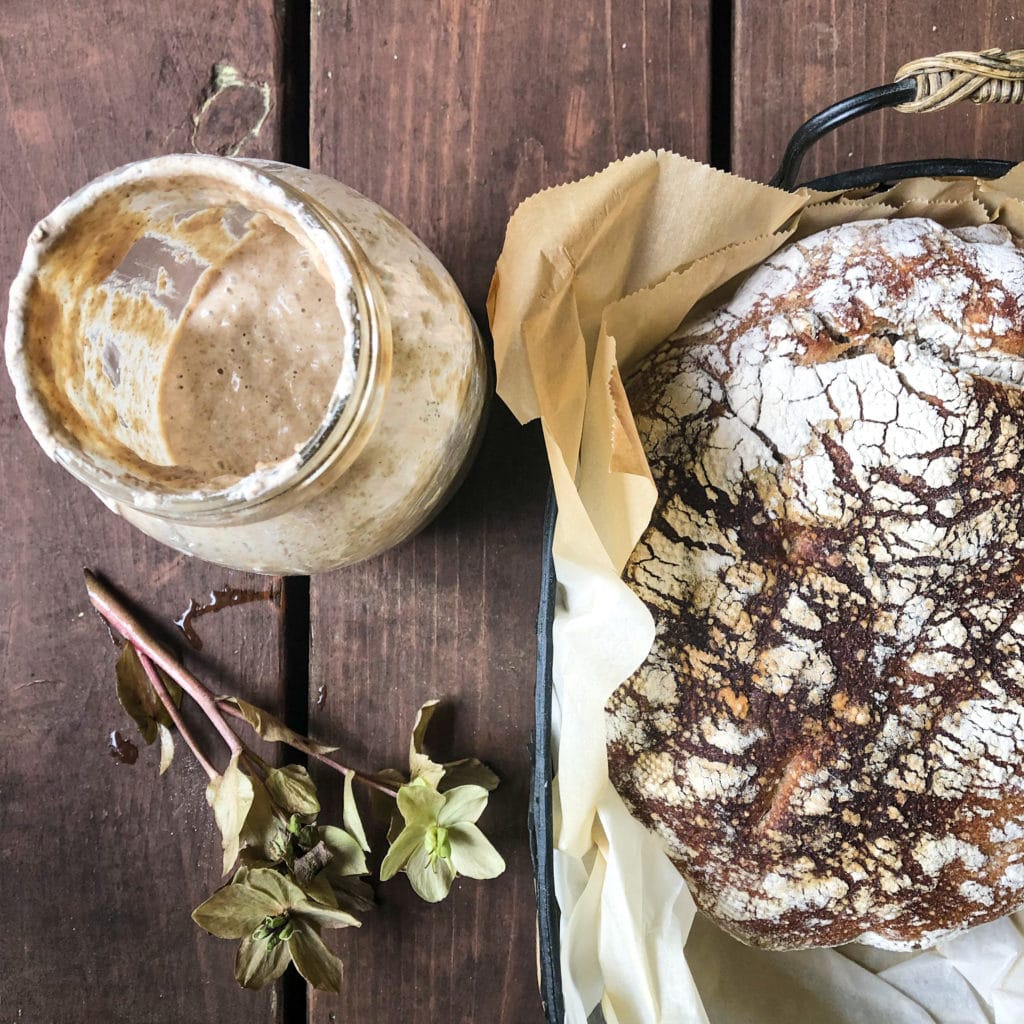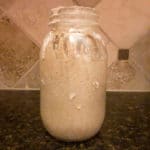Fun fact learned during quarantine: when people are stuck in doors all day, they’ll return to their agricultural society roots and bake a ton of bread. I’m certainly guilty of this – I’ve been turning out loaves of Focaccia, messed-up baguettes, crusty loaves, and even croissants. I was on a bread-making roll… and then it seemed like the whole world ran out of yeast, all at once.
Seriously. First a run on toilet paper, now a run on yeast.
Granted, yeast is not essential to your day-to-day existence, but it is essential to making bread. So for all of you staying at home right now, lamenting the lack of yeast, I’ve come up with a guide to commercial yeast alternatives so you’ll be on your way to baking delicious loaves in no-time at all.
First, let’s do a little 101 on yeast.
What is yeast? Yeast is a living microorganism that occurs naturally in the environment around us. It lives on and in our bodies (see beer made from beard yeast) and has peacefully co-existed with humans for centuries, leavening our breads and fermenting our beer. When yeast divide, they produce carbon dioxide. This is what makes bubbles in all yeast-fermented products.
So what is “commercial yeast?”
Commercial yeast is the yeast that you can buy in your local grocery store. You can think about it as “domesticated” yeast that has been specially bred to multiply quickly and produce lots and lots of carbon dioxide in a very predictable manner. This makes commercial yeast great for bread-making because your loaves will quickly and dependably rise. Most bread recipes will call for “instant” or “active dry” yeast, which are both kinds of commercial yeast.
Ugh, so what if I don’t have any commercial yeast?
Well, yeast occurs naturally in the environment, all around us. And while I don’t recommend harvesting yeast from your beard, I do recommend creating a “sourdough starter.” A starter is a simple mix of flour and water that creates a happy, nourishing environment for yeast. They’ll start multiplying and bubbling away, creating a stock of yeast that you can for baking. A starter requires some upkeep, such as regular feedings of flour+water. It’s almost like having a very low maintenance pet that can also be turned into bread. You literally do not need anything other than flour and water to make this happen.
Great! Does that mean I never need to buy commercial yeast again?
Not exactly. Wild starter yeast and commercial yeast are NOT the same. First, starter yeast tends to have a distinct flavor – that’s what makes sourdough sour. Second, starter yeast is not purposely designed to quickly create a burst of carbon dioxide. As a result, you need more yeast and more time to achieve the same lift, and the rise time can be more unpredictable. And because your starter yeast live in a liquidy / floury environment, you need to adjust your recipe to take into account this difference. So if you have commercial yeast, and the recipe calls for commercial yeast, I would just use commercial yeast.
That being said, there are a number of awesome sourdough starter recipes for a variety of breads outside of just sourdough:
Are there any reasons to use sourdough starter instead of commercial yeast?
Yup, some people really prefer baking exclusively with sourdough starter. You get a deep, complex flavor that is unique to geography, since the yeast is captured from the local environment. Additionally, there are studies that show that bread fermented with wild yeast has better health benefits that bread fermented by commercial yeast. The slower fermentation provides better nutrients, makes bread easier to digest, and regulates blood sugar levels.
Okay I just don’t want to deal with yeast at all! Can I still make bread?
You won’t be able to make super fluffy leavened bread, but there are a number of recipes where the lift comes from baking powder or baking soda. These are generally called “quickbreads,” because you don’t have to patiently wait for the bread to rise.
Some quickbread recipes:
Banana bread: Classic banana bread muffins
Soda bread: Easy Irish soda bread
Beer bread: Honey beer bread
Okay you’ve convinced me – how do I make my own sourdough starter?
It’s super easy – I’m sharing what I did at the bottom of this post.
Other FAQ
Why do I have to throw out so much starter when I feed it?
You don’t want the starter to take over your house. What you can do is use it in some excellent sourdough starter recipes: https://www.kingarthurflour.com/recipes/collections/sourdough-discard-recipes
What if I don’t want to upkeep my starter anymore?
You can mix in some flour so it becomes hard and then store it in your freezer. When you want to bake again, revive with water and flour a few days before baking.
My starter smells funny and there’s green / pink stuff growing on it – what should I do?
That sounds like a bacterial infection to me. Usually a well-fed and cared for starter will take care of any bacterial problems, but if the bacteria strikes I’d recommend throwing it out and starting from scratch.
Awesome resources:
Cooked by Michael Pollan
https://www.kingarthurflour.com/recipes/sourdough-starter-recipe
https://www.breadmatters.com/the-benefits-of-sourdough/
DIY Sourdough starter
Equipment
- glass or food-grade plastic jar
Ingredients
- 50 g (1/3 cup) whole wheat flour
- 50 g (1/3 cup) all-purpose flour
- 100 g (1/2 cup) warm water (about 110 degrees F)
Instructions
- Select a nice glass or food-grade plastic jar to be your starter's home. It should have room to grow – I use a 32oz mason jar.
- Fill the jar with a 1:1 ratio of flour to warm water. I use a 50/50 mix of whole and all-purpose flours, but you can certainly use only all-purpose flour if that's your preference. Make sure your water is "warm," not "hot." It should feel comfortable to the touch.
- Stir the flour and water thoroughly until you have a thick batter. Leave out in a cool, dry location with the top off.
- Observe for any signs of yeast activity, such as bubbling or a smell of ripe fruit. This could take up to 5 days.
- After you notice yeast activity, maintain your starter with regular feedings. Discard 80% of your starter and then mix in another 100g of flour and 100g of warm water. If you don't feed your starter, it will die, and dead starter will not leaven anything.



Pingback: Black sesame and red bean sourdough | Halicopter Away
Hi there,
As you live in SF where average temp is not high, so how you grow sourdough starter?
Thanks in advance for sharing.
Darin
Hi Darin, when my kitchen is chilly I place my starter in the oven with the door cracked and lights on. This creates a gentle warmth that helps my starter grow more quickly! Hope this helps.
Thanks so much. I will try😄